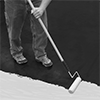Filter by
For Joining
For Use On
Container Type
Maximum Temperature
Manufacturer
For Use With
Container Size
Type
Formulation
Reaches Full Strength
Begins to Harden
Clarity
Performance
Hardness Rating
Material
Adhesive Type
DFARS Specialty Metals
Patch Material
Sealing
Fastening and Joining
Facility and Grounds Maintenance
Electrical
Safety Equipment

















































